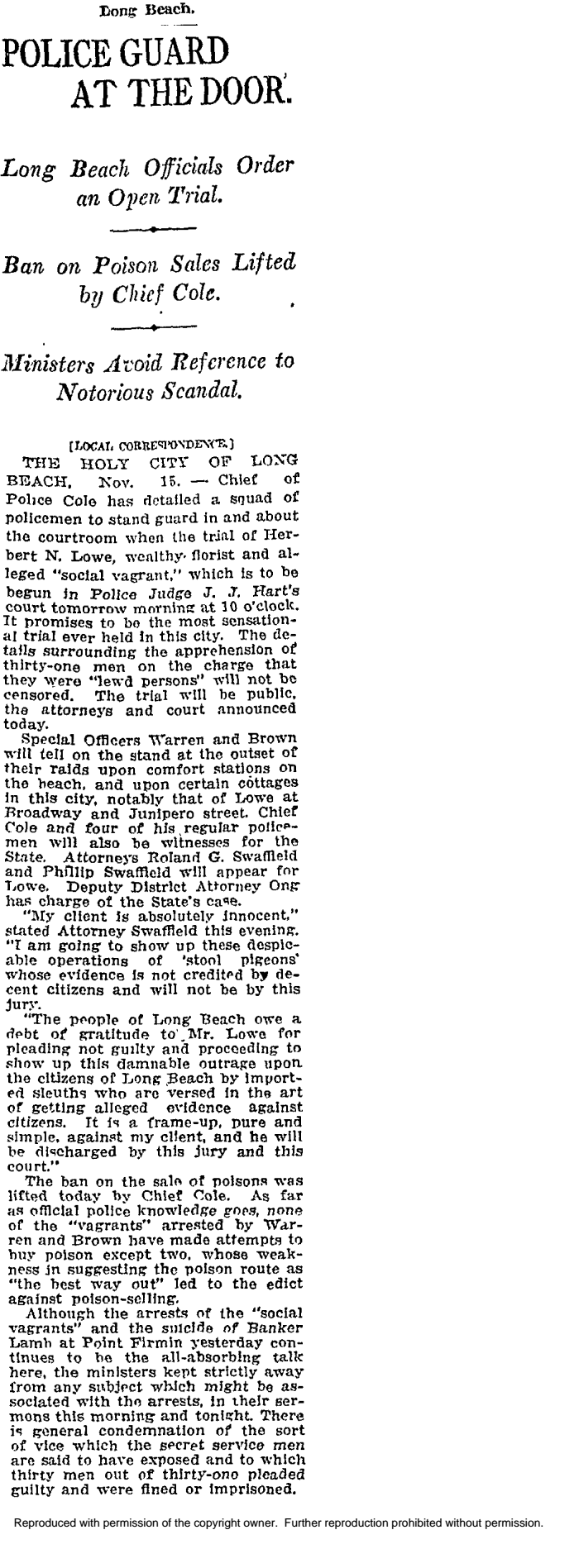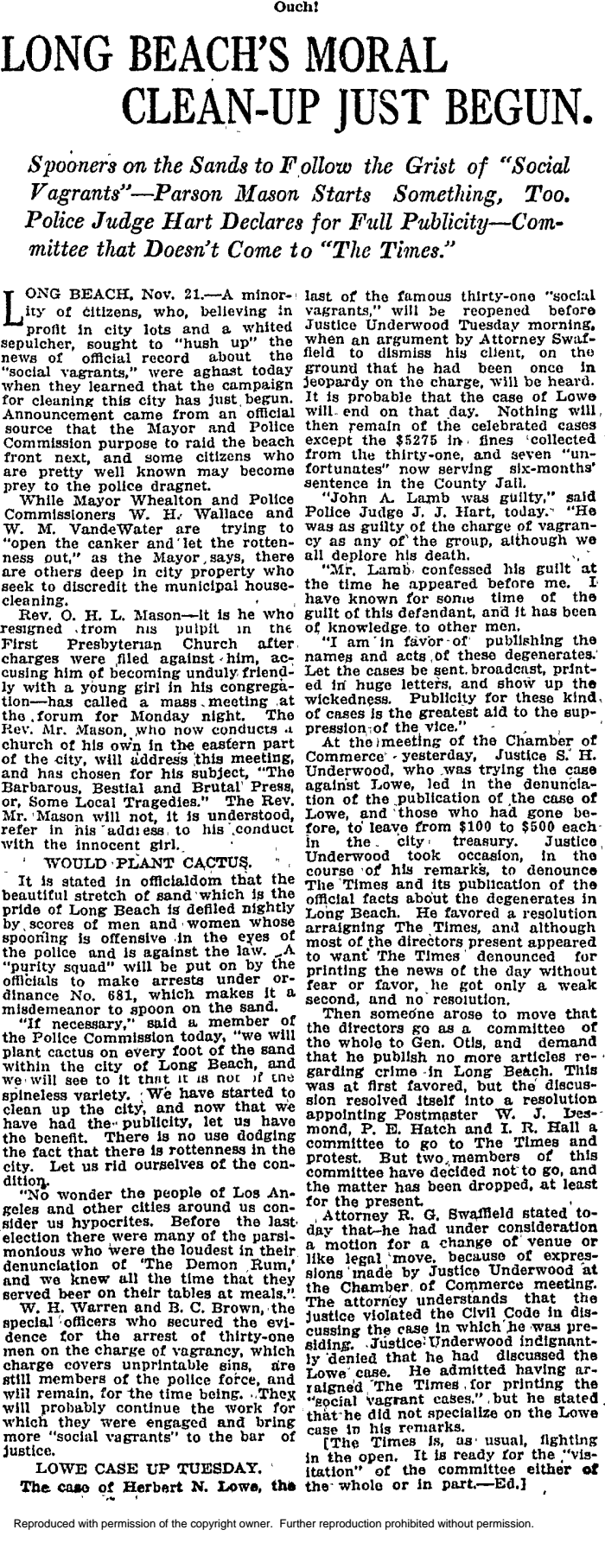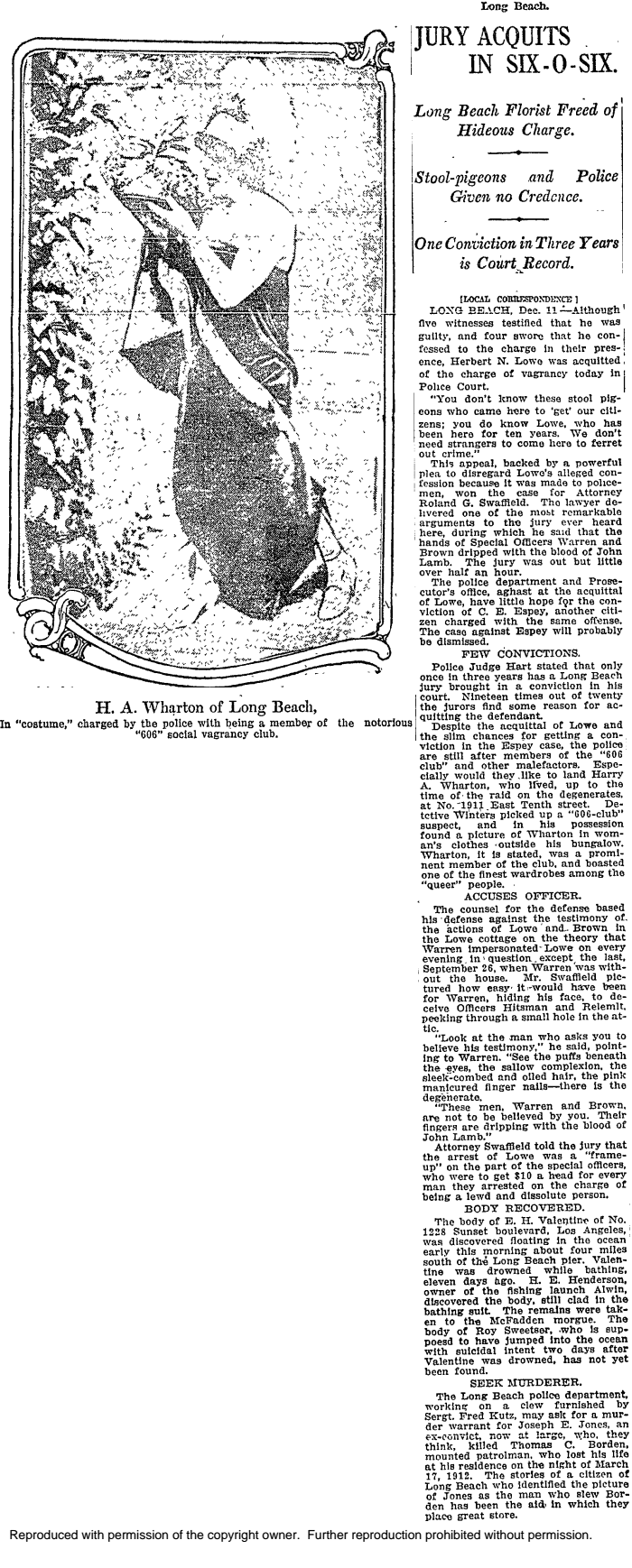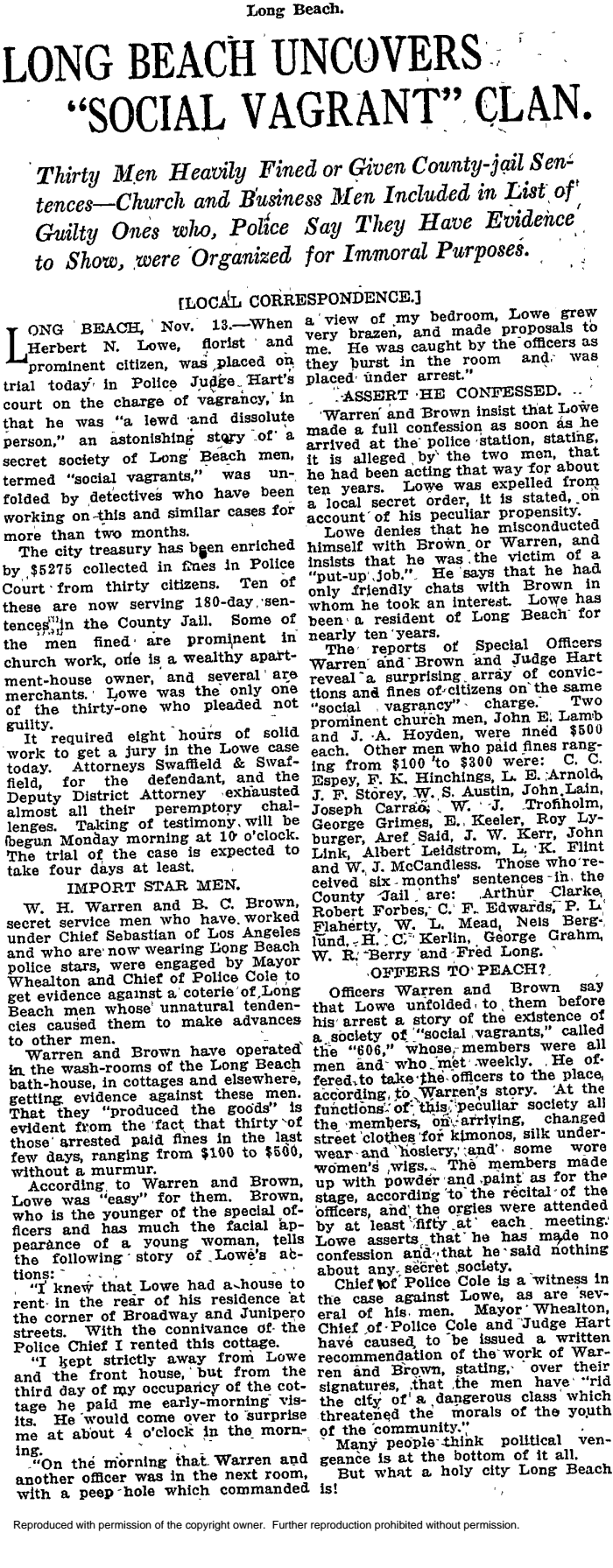The Long Beach ‘social vagrant’ investigations, 1914
The arrests of 31 men in connection to two private Long Beach clubs where men were said to cross dress and have sex was the talk of the town in 1914. The Los Angeles Times and other sensationalist newspapers at the time printed the names of the arrested men, with devastating results.
|
John Lamb, a prominent Long Beach banker and Episcopal Church officer, killed himself soon after he was arrested in an undercover sting operation in 1914 that targeted gay men in the city. Lamb was among 31 men, alleged members of two private clubs in Long Beach, who were arrested and accused of “social vagrancy.” Lamb said in a letter to his sister that he was mortified to read his name ... |
|
The Los Angeles Times covered the sensational 1914 trial of Herbert N. Lowe, who was among 31 so-called “social vagrants” arrested and accused of lewd conduct and having gay sex. Authorities accused the men of belonging to two private clubs, the 606 Club and the 96 Club, where, officers said, they cross dressed and had sex. B.C. Brown, one of two vice officers who helped pioneer the use of undercover ... |
|
The Los Angeles Times appeared to take great glee from reporting on the 1914 arrests of 31 men in an undercover sting operation targeting gay men in Long Beach. The Times reported sneeringly from the so-called “Holy City of Long Beach.” The men, including local florist Herbert N. Lowe, were alleged members of two private clubs for gay men in Long Beach. While others, called “social vagrants” by the Times, ... |
|
An attorney representing one of 31 men arrested on suspicion of “social vagrancy” in Long Beach a century ago questioned the tactics of undercover police officers who rented an apartment from his client and spied on him as he flirted with a decoy officer. Herbert N. Lowe, a local florist, was ultimately acquitted. |
|
The Los Angeles Times detailed the arrests of 31 men accused of “social vagrancy” and gay sex in the neighboring city of Long Beach. The newspaper, which published the names of the men, appeared to take great delight in covering the “moral clean-up” in the city and the embarrassment caused by “the scandal.” One man, florist Herbert N. Lowe, fought the charges at trial. The article quotes a judge speaking ... |
|
An undercover vice officer who pioneered the use of stings targeting gay men killed himself after fatally shooting a woman with whom he was infatuated, according to a Los Angeles Times story published on July 21, 1915. W.H.“Billy” Warren — known for the “now celebrated ‘social vagrant’ investigations” in Long Beach a year earlier — shot Creta Carter and then turned the gun on himself, the newspaper reported. |
|
Herbert N. Lowe, a florist charged following an undercover operation targeting gay men in Long Beach, was acquitted after a trial that drew large crowds. Lowe was among 31 alleged members of two private Long Beach clubs, the 606 Club and the 96 Club, who were arrested and accused of “social vagrancy” and gay sex. Lowe’s attorney told the jury that the hands of undercover Long Beach vice officers W.H. ... |
Long Beach undercover sting targeting gay men results in 31 arrests in 1914, causing a local scandal|
Long Beach police arrested 31 men, all alleged members of two private clubs, on suspicion of “social vagrancy” during stings conducted by vice specialists W.H. Warren and B.C. Brown. The arrested men, the article said, had “unnatural tendencies [which] caused them to make advances to other men.” Most paid fines of agreed to serve jail time, but one, florist Herbert N. Lowe, fought the charges. The officers said he told ... |







